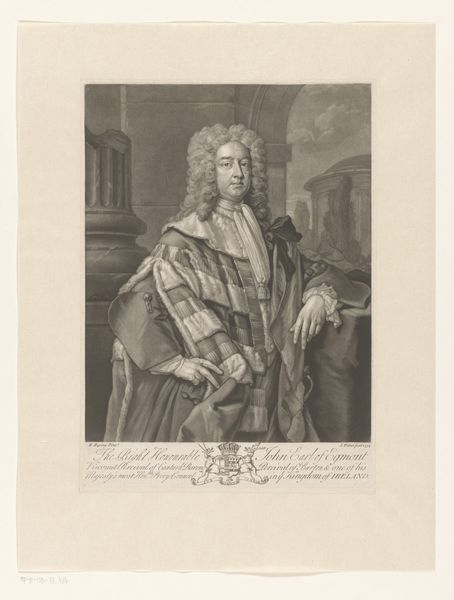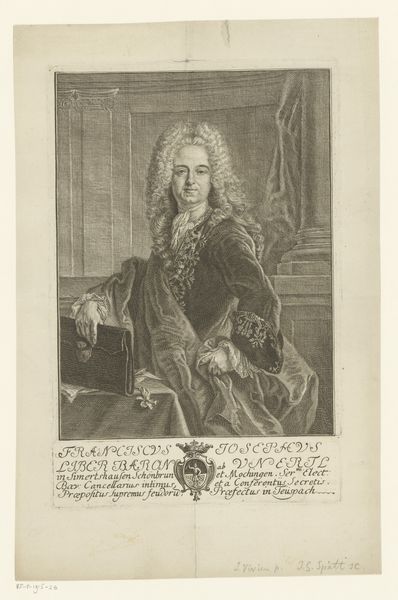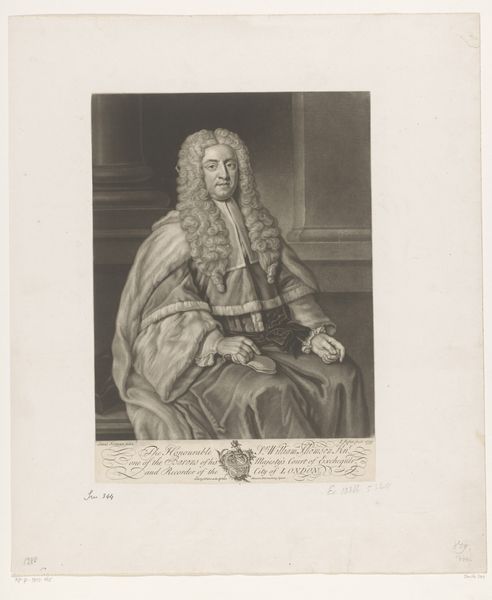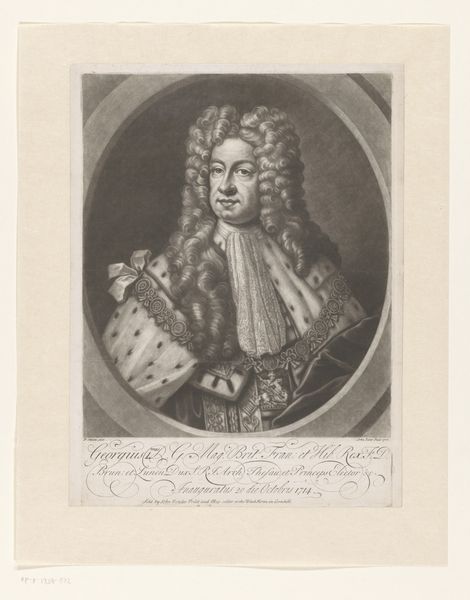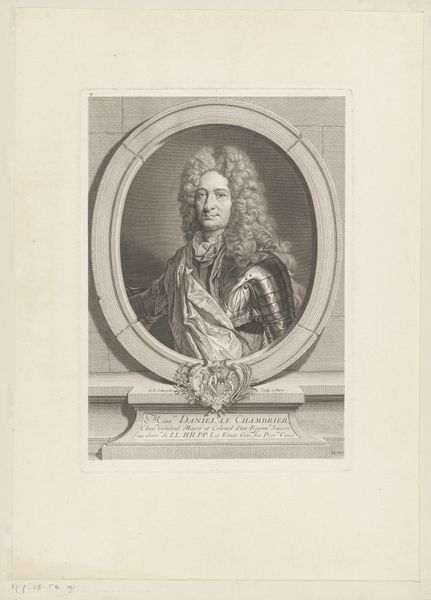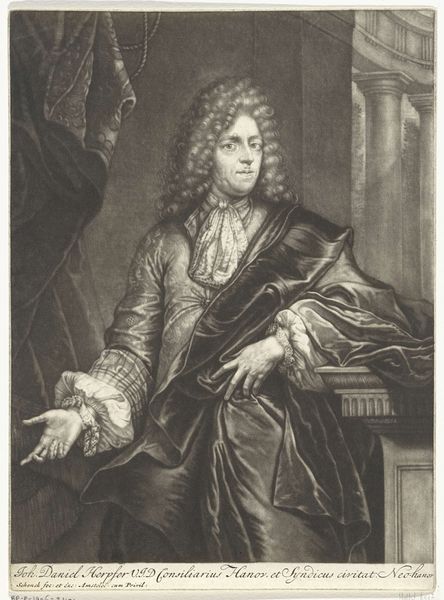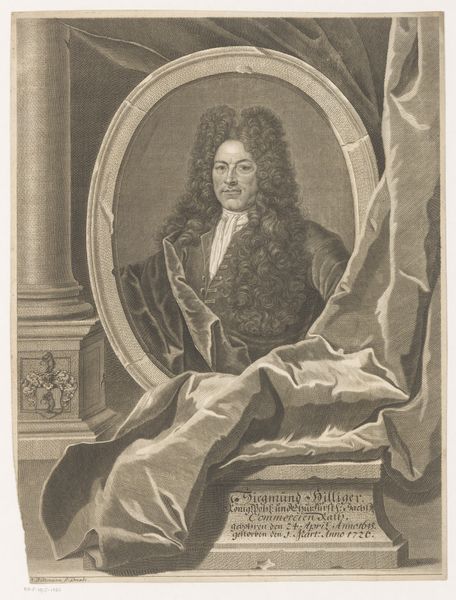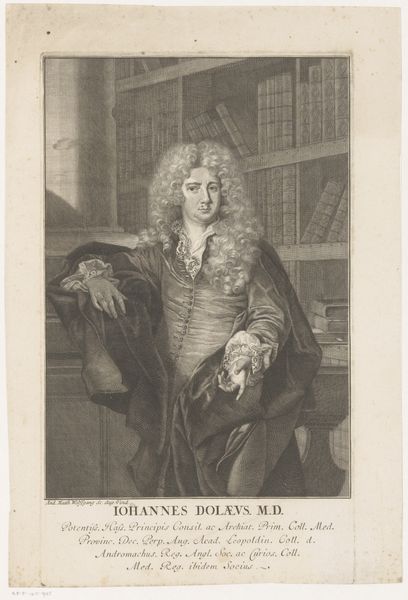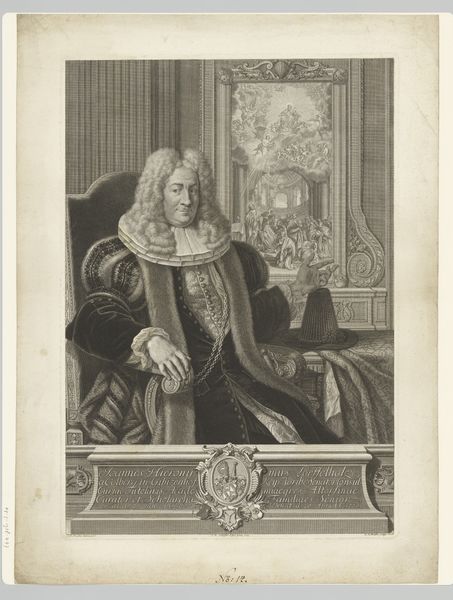
Portret van Robert de Cotte, leunend op een boek in klassieke architectuur 1666 - 1708
0:00
0:00
engraving
#
portrait
#
baroque
#
line
#
history-painting
#
academic-art
#
engraving
Dimensions: height 356 mm, width 273 mm
Copyright: Rijks Museum: Open Domain
This is Antoine Trouvain’s portrait of Robert de Cotte made in the late 17th century. Observe how de Cotte is portrayed amidst classical architectural elements, a deliberate choice that situates him within a lineage of intellectual and artistic mastery. The book upon which he leans symbolizes knowledge, but it is more than a mere prop. Consider the gesture of de Cotte's hand, extended as if in mid-discourse. This motif has deep roots, appearing in countless depictions of philosophers and orators throughout history. Think of classical statues of Roman emperors adopting similar stances, asserting authority and wisdom. This pose is not static; it evolves, reflecting the changing values of each era. In de Cotte’s time, it embodies the spirit of the Enlightenment, where reason and intellect were paramount. The collective memory of such images subtly influences our perception. The artist taps into a shared cultural understanding, engaging viewers on a subconscious level. The symbol is never fixed, but in constant flux, continually reshaped by the currents of history and the depths of human psychology.
Comments
No comments
Be the first to comment and join the conversation on the ultimate creative platform.
